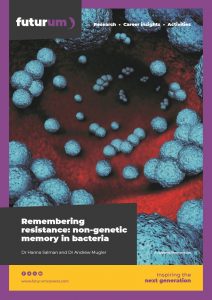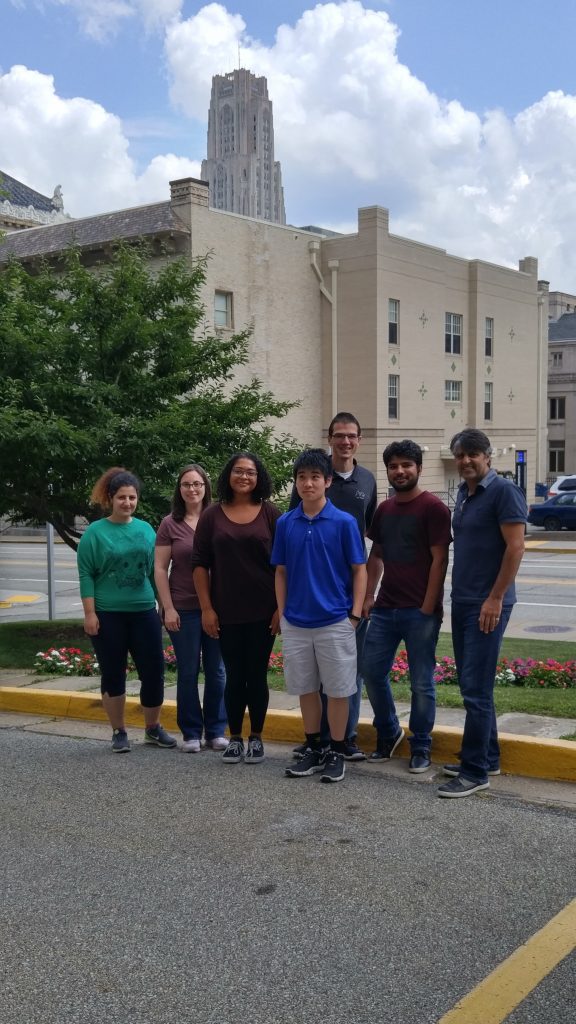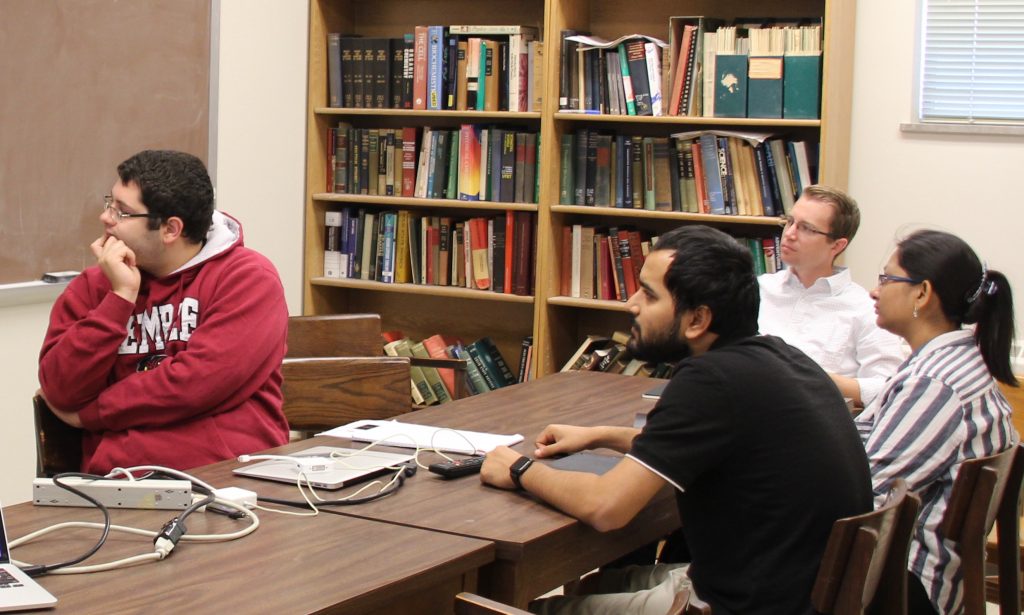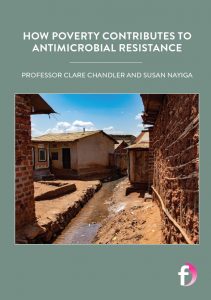Remembering resistance: nongenetic memory in bacteria
Typically, the skills and properties developed through adaptation during a lifetime may not be directly passed onto the next generation as encoded in genes – they are learnt. However, Dr Hanna Salman and Dr Andrew Mugler, from the University of Pittsburgh in the US, are finding evidence that bacteria can pass on ‘memories’ to their offspring, over several generations. Understanding more about this process is crucial for the fight against the rise of antibiotic resistance in bacteria.
Talk like a biological physicist
Antibiotic — a substance that inhibits the growth of, or destroys, bacteria
Bacteria — a large group of single-celled organisms, some of which can cause disease
Daughter cells — genetically identical cells formed when a cell undergoes mitosis
Mitosis — a type of cell division resulting in two daughter cells with the same number of chromosomes as the parent cell
Messenger RNA (mRNA) — a genetic ‘messenger’ molecule involved in protein synthesis
Non-genetic memory — in bacteria, information or characteristics that are passed on by mechanisms other than through genetic inheritance
Antibiotic resistance is a growing problem that seriously threatens humanity’s collective ability to fight bacterial disease. Scientists from many different fields are working on addressing this issue. One such field is the relatively new discipline of biological physics, which involves taking lessons from physics and applying them to biological questions. Dr Hanna Salman and Dr Andrew Mugler both work in the same department at the University of Pittsburgh but take different – yet complementary – approaches to understanding antibiotic resistance. While Hanna’s lab undertakes experiments with bacteria, Andrew’s lab develops mathematical equations and computer programmes that model the outcomes of such experiments. Combined, they are studying a previously inaccessible pathway by which bacteria can potentially develop antibiotic resistance.
Non-genetic memory
A cell’s DNA is where instructions of how to make all cellular components are stored. It was, therefore, believed that all cellular properties are determined by the DNA, and that DNA was the only carrier of memory between consecutive generations. However, cellular components are produced by complex interactions between cellular machinery and the DNA. This suggests that cellular machinery passed between consecutive generations can also influence the cell’s memory. Bacteria divide to form two new, identical ‘daughter’ cells via a process called mitosis. This means that, as well as the genetic material, both daughter cells retain other cellular content from the parent cell. “When a cell divides, all of its content is divided between the two daughter cells,” says Hanna. “If a cell happens to have a certain property – more molecules of a specific type, for instance – then this property may be retained in its daughters.”
This process is different from genetic inheritance, because while information encoded in genes is very stable, the cell’s molecular content exhibits large fluctuations, which can lead to deviations in the cell’s attributes from their steady state. “Cellular properties may persist for several cell divisions before the natural processes that keep these attributes steady kick in,” says Andrew. “As a result, cellular ‘memory’ can last for multiple generations – longer than the lifetime of the cell itself.”
It is only in recent years that scientists have paid significant attention to this process of nongenetic memory in bacteria. “Previously, it was thought that when cells divide, the ‘memory’ of the previous generation is essentially wiped,” says Hanna. “Now, it has been established that cell properties are subject to complex control mechanisms, but it is still generally assumed that non-genetic memory only lasts a generation or so.” However, Hanna and Andrew’s labs are uncovering evidence that suggests that this memory can persist for multiple generations – which has huge significance for the real world.
Antibiotic resistance
“Bacterial resistance to antibiotics is a major health concern,” says Andrew. “Often, bacteria are able to develop antibiotic resistance without mutating their genome, by changing their cellular properties.” If this resistance can be passed on through multiple generations, it has the potential to be a big problem. Previously, it was assumed that antibiotic resistance was always inherited genetically, through mutations in the bacteria genome, but non-genetic memory presents a possible second pathway for such resistance to emerge. “We need to understand non-genetic cellular memory in a quantitative way, how it is affected by antibiotics, and the underlying molecular mechanisms behind it,” says Hanna. “With this knowledge, we can potentially reduce or even prevent bacteria’s ability to develop resistance.”
Hanna and Andrew’s teams are investigating how different antibiotics appear to affect this intergenerational memory. “This study will allow us to better understand how cells develop antibiotic resistance,” says Hanna. “In addition, we’re planning to study how the abundance of messenger RNA (mRNA) can affect the cell’s memory.” mRNA is the ‘messenger’ molecule that carries the genetic information stored on DNA to the cellular machinery that uses this information to build specific proteins. “mRNA is also passed on from mother to daughter, so its abundance is likely an important factor affecting cellular memory,” says Andrew.
Experiment and theory
The teams have been making some interesting findings: specifically, that non-genetic cellular memory can endure for multiple generations. “These findings are at odds with current understanding of how cells control their properties and division cycles,” explains Hanna. “This indicates a gap in our collective scientific knowledge.” The teams are aiming to fill this gap with a two-pronged approach: Hanna’s lab focusing on further experiments, and Andrew’s lab focusing on mathematical modelling. “We aim to develop a fundamental experimental and theoretical understanding of the observed multigenerational memory,” says Andrew.
Reference
https://doi.org/10.33424/FUTURUM463
Dr Hanna Salman and Dr Andrew Mugler use experimental and theoretical methods to investigate non-genetic memory of antibiotic resistance in bacteria. © Christoph Burgstedt/ Shutterstock.com
Both experiment and theory are necessary to build a strong scientific case for these findings. “Experimental results suggest a model of a possible underlying mechanism, but mathematical theory is required to make this model plausible, precise and predictive,” says Hanna. “Conversely, the predictions made by theoretical models need to be tested with real-life experiments.”
This collaboration between experimentalists and theorists has been underway in the realm of physics for decades but is a relatively new approach for biological systems.
Non-genetic memory in bacteria is not simply a matter of generations having more or less of certain molecules. There are complex interactions to account for, which is why sophisticated modelling approaches are needed. “Statistical physics provides the framework for describing fluctuations in cellular properties,” explains Andrew. “These tools allow us to describe how molecular abundances fluctuate in time, and how they depend on one another, ultimately helping us predict the outcome of experiments.” These experiments need to be tightly controlled to be compatible with the model. “We continuously strive to develop new experimental systems to accurately control the environment and perform molecular manipulations,” says Hanna.
Looking ahead
By understanding the molecular control behind non-genetic memory, researchers can then unlock mechanisms to influence or disrupt this control. “If we understand how this memory is affected by antibiotics, we can influence it to prevent cell adaptation to new antibiotics,” says Andrew. “Additionally, control mechanisms in biology are often common across many different types of cells, so what we learn here may also be relevant to other contexts.” For instance, the uncontrolled proliferation of cancer cells appears to involve a non-genetic change similar to bacterial adaptation, so it is possible that the teams’ findings may be useful for slowing or stopping the spread of cancer.
Hanna and Andrew are aiming to develop ever-more sophisticated approaches to study this multigenerational memory in more detail. “Experimentally, we are working on building new devices and new genetic tools to measure the properties of multiple molecule types in many pairs of daughter cells at the same time,” says Hanna. “Theoretically, we are developing a mechanistic theory of cell division to describe how molecular fluctuations and memory work from the molecular to the cellular scale,” adds Andrew.
 Dr Hanna Salman
Dr Hanna Salman
Dr Andrew Mugler
Department of Physics and Astronomy, University of Pittsburgh, USA
Field of research: Biological physics
Research project: Using experimental and theoretical methods to investigate non-genetic memory of antibiotic resistance in bacteria
Funders: US National Science Foundation (NSF) award numbers DMS-2245816, PHY-2014116 and PHY-2118561, US-Israel Binational Science Foundation (BSF)
About biological physics
Biological physics is an interdisciplinary field that takes approaches most typically used by physics to study biological questions. As it becomes easier to develop large and complex datasets of biological information, there is increasing value in using quantitative methods to analyse this data. This can involve any area of biology, from bacteria to ecology, biotech to genetics.
Biological physics is a relatively new field, which means it still has a way to go to truly reach its potential. “Despite the significant efforts devoted to biological physics over the last two decades, there are still so many questions that we haven’t touched on yet,” says Hanna. “The experimental and theoretical tools that are currently being developed in the field will make a wide range of questions addressable for the next generation of biological physicists.” Hanna believes that these questions will address some of the fundamentals of life: the fine details of how organisms learn, reproduce and evolve.
Powerful new tools for data collection and analysis are making biological physics methods increasingly possible. “The interface of physics and biology is a rapidly growing field,” says Andrew. “Experiments are increasingly quantitative, and data analysis is increasingly benefitting from advanced computational tools.” This opens new doors for data-driven biology, providing the tools for applying physical modelling techniques to biological questions.
Pathway from school to biological physics
• At high school and college, subjects such as physics, mathematics, computer science and biology will provide a good groundwork for working in biological physics.
• Hanna and Andrew say that a university background in physics, rather than biology, provides a smoother path into biological physics. Andrew adds that an increasing number of undergraduate courses are incorporating both early on. Hanna emphasises that becoming an independent learner is crucial, particularly for a newer field like biological physics, which needs innovative ideas to advance.
Explore careers in biological physics
• Andrew recommends exploring the Division of Biological Physics within the American Physical Society, especially its new journal, PRX Life, to gain an understanding of the field.
• Hanna points to three Physics Frontiers Centers focused on biological physics, all of which offer outreach and education programmes. They are The University of Chicago’s Center for Living Systems, Princeton University’s Center for the Physics of Biological Function and Rice University’s Center for Theoretical Biological Physics.
• Hanna’s lab collaborates with Pittsburgh public schools to offer internships to high school students. Get in touch with the Salman lab.
• According to Salary.com, the average biophysicist salary in the US is $72,600.
Meet Hanna
I have always wanted to understand why and how natural phenomena occur. I find it exciting whenever I finally understand why things around us behave the way they do. This passion was in part inspired by my dad, who was a high school physics teacher. He saw my aptitude for science and encouraged me to pursue it.
The road to an independent academic position in science is very long and often difficult. To go through it requires hard work and a lot of support and encouragement along the way. Every experiment that succeeded after much work, and every word of support and encouragement I received from my advisers, were the eureka moments that gave me confidence that I could make it as a scientist.
In addition to making new discoveries in research and understanding how the world around us works, the most rewarding thing of leading my own lab is to see my students grow as scientists, become independent and accomplished researchers, and achieve their own career goals.
When carrying out new and innovative research, many attempts will fail. This might discourage new students from continuing the work and trying new ways to achieve their goals. The most challenging thing as a group leader is to maintain students’ motivation in the face of these failures.
There are several scientific discoveries that I am proud of, but what I am most proud of so far is that all my students were able to reach the next milestone they wanted to achieve upon completing their work with me, and which advances them toward the career goals they set for themselves.
What initially attracted me to biology is that unlike inanimate systems, biological systems can vary in their behaviour under the same environmental conditions. I am currently working toward understanding how this variability develops over time and how information passed on from one generation to the next allows for this diversification. We have recently developed a new experimental tool that can help us shed some light on this question, and I hope that we can use it to answer this question, in the near future.
Hanna’s top tips
1. Make sure that you really love your chosen research area and have genuine interest in it.
2. Don’t just follow trends; they will fade and change with time, and only by being interested in what you do will you overcome challenges and keep the motivation to achieve your goals.
Meet Andrew
I always loved mathematics and art. I found that science, especially physics, combines aspects of both, because it requires creative problem solving. I also had a dedicated and dynamic high school physics teacher who pushed me to pursue science.
I considered leaving graduate school to teach, but I realised that research-focused careers often include the freedom to teach, whereas teaching-focused careers rarely allow for extensive research. I’m glad I chose this path because I love doing both.
It is deeply rewarding to see a graduate student go from knowing nothing about a field to becoming an expert and, essentially, begin teaching me! I also love solving puzzles, so it is personally rewarding to have that be a part of my livelihood and get to share that with others.
It is challenging to sustain a steady stream of new ideas. It requires staying very engaged with the field and foreseeing where my group can contribute meaningfully.
Although I have won several early career awards, I am proudest of an award I won with others: the American Physical Society’s Oppenheim Award. It honours the best paper in Physical Review E, a specialised biological physics journal. It is not the most prestigious award, but I am proud because my student was the paper’s first author, and it means that people really engaged with and enjoyed the paper.
I am also proud that undergraduate students I have advised on research projects have won some of the highest awards available, including a Fulbright Scholarship and the American Physical Society’s highest undergraduate award.
The past few decades have seen a huge advance in our understanding of the molecular interactions that drive cell behaviour, but new technologies are generating more data than ever before at the cellular and population levels. A primary goal of mine is to take the mathematical tools from physics that I have applied to molecular interactions in the past and apply them to cell- and population-level interactions in the future.
Andrew’s top tip
Aim to gravitate towards the subjects and people who interest you most. You don’t have to know what you will be doing in five or ten years from now, but if you explore and trust your instincts, you will find yourself doing what you love and are good at.
Do you have a question for Hanna and Andrew?
Write it in the comments box below and Hanna and Andrew will get back to you. (Remember, researchers are very busy people, so you may have to wait a few days.)
Learn more about issues related to antibiotic resistance:
www.futurumcareers.com/how-poverty-contributes-to-antimicrobial-resistance










0 Comments